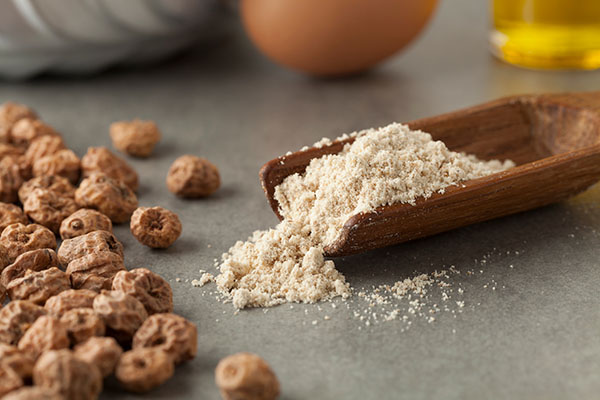
Advertisement
Kimchi is a tasty superfood from Korea. If you haven’t tried kimchi yet, think of it as a version of sauerkraut that is spicier and more colorful.
Made with a flavorful blend of vegetables, salt and seasonings, kimchi can boost your digestive health.
Kimchi, a delicious and healthy side dish from Korea
The name “kimchi” comes from the Korean word “chimchae,” which means “vegetables soaked in brine.”
Kimchi is a fermented food that is full of probiotics, or “good” bacteria for your digestive system. The side dish is made via lacto-fermentation just like sauerkraut.
Despite the name, lacto-fermentation doesn’t have anything to do with milk. The process uses Lactobacillus bacteria to convert sugars into lactic acid, the compound responsible for kimchi’s unique sour flavor.
Kimchi can be made from different vegetables like cabbage or radishes. It is often seasoned with ingredients like Korean red chili pepper flakes, garlic and ginger, which also offer many health benefits.
Some traditional kimchi recipes use salted shrimp and anchovies for flavoring, but you can buy vegan versions, too.
Kimchi is a superfood that’s low in calories and has a high water content. However, it’s also high in sodium because it is made via a salt-based fermentation process.
Overall nutrition varies depending on the recipe and ingredients used. Generally, kimchi contains the following nutrients:
- Folate
- Iron
- Manganese
- Vitamin A
- Vitamin B6
- Vitamin C
- Vitamin K
Kimchi can also sometimes contain added sugar, depending on the brand you buy or the recipe you use.
If you haven’t tried kimchi yet, it has a strong odor and a complicated flavor: It’s often described as sour, spicy and salty, with an umami (savory) taste.

Health benefits of kimchi
A jar of kimchi smells a little unusual, with hints of garlic and a strong sulfur-like smell. Kimchi is an acquired taste, but it offers amazing benefits.
The main health benefits of kimchi are linked to its probiotic content. Kimchi contains different strains of probiotics, mostly from the Lactobacillus family.
Unlike probiotic supplements that only provide a few probiotic strains, fermented foods like kimchi contain millions of different varieties of live microbes that can help boost your gut health. Maintaining gut microbial diversity is important because this ensures that “bad” gut bacteria can’t take over your gut and cause health problems.
Here are eight benefits of eating kimchi regularly.
Kimchi helps boost your immune system
If possible, buy kimchi made with traditional ingredients like garlic, ginger and red pepper. Kimchi is rich in immune-boosting antioxidants and beneficial plant compounds like flavonoids and phenols.
Kimchi can also improve your digestive health
Kimchi is good for your gut because it’s full of dietary fiber and lactic acid bacteria. Data suggests that sulfur-methyl-L-methionine, a compound in kimchi, can help prevent damage to the intestinal lining.
Kimchi also has therapeutic effects on peptic ulcer and stomach inflammation caused by H. pylori bacteria, and it can help prevent bad germs from attaching to digestive cells.
Kimchi has anti-inflammatory and anti-aging properties
Kimchi is full of antioxidants like vitamin C, a nutrient often studied for its ability to protect your skin from oxidative damage. According to a 2011 test-tube study, kimchi can help regulate the oxidative process of cells and slow inflammation and even the aging process.
Data from animal studies also show that the strain Lactobacillus plantarum in kimchi helps reduce inflammatory markers.
Kimchi offers heart-protective benefits
According to research, Lactobacilli isolated from kimchi can help lower LDL (low-density lipoprotein), or “bad” cholesterol.
Traditionally, kimchi uses garlic in its fermentation process. Garlic contains selenium and allicin, two compounds that offer heart benefits such as reducing inflammation and protecting the artery walls.
Kimchi can help protect you from cancer
Data from a 2008 study suggests that kimchi varieties made with red pepper seed are high in antioxidants, which help protect cells from oxidative damage linked to health problems like cancer.
Additionally, cabbage is a cruciferous vegetable rich in glucosinolates, which are compounds that break down to form anticancer compounds called isothiocyanates.
Eating kimchi can help promote weight loss
Kimchi is a superfood that you should eat more of if you want to shed some pounds since it is full of dietary fiber and gut-friendly bacteria.
In a 2011 study, researchers worked with volunteers who consumed kimchi to find out which variation of kimchi offered more weight loss benefits. The 22 obese adults consumed fresh and fermented kimchi for four weeks, with a two-week washout period.
According to the results, fermented kimchi had a slightly more significant positive effect on risk factors for metabolic syndrome, like systolic and diastolic blood pressures, percent body fat and total cholesterol, compared to fresh kimchi. Additionally, fermented kimchi helped lower the blood sugar levels of the participants.
Kimchi contains compounds that can boost your skin health
Lactobacillus bacteria are often studied for their potential to help treat skin conditions such as atopic dermatitis or eczema. Animal studies have linked reduced skin inflammation, irritation and mite-induced dermatitis in mice fed Lactobacillus bacteria.
Kimchi may have antifungal properties
Scientists have discovered that some strains of Lactobacillus can help fight Candida. If left unchecked, Candida can cause yeast infections.

How to store kimchi
You can purchase different kinds of kimchi at the refrigerated section of large grocery stores. Try looking for it near the miso or tofu.
Korean markets and restaurants also sell kimchi. Some Korean restaurants will offer bottles of homemade kimchi that you can purchase. Finally, you can try buying kimchi online.
If you make kimchi at home, you need to refrigerate it for at least two full weeks so it ferments and develops its best flavors. After that, it will continue to age in the fridge. Kimchi should last for several months or so when refrigerated.
Cooking with kimchi
Kimchi is a delicious and versatile ingredient that can be used in almost any savory dish.
Traditional Korean recipes use kimchi for flavoring and sometimes for cooking. But take note that heating kimchi or other fermented foods at temperatures over 115 F will kill off the healthy probiotics.
Prevent this by adding kimchi at the end of the cooking process or serving it over already cooked foods.
Here are different ways to eat kimchi:
- Serve kimchi plain as a side dish.
- Add kimchi to a tomato base for braised chicken.
- Serve it over quinoa or other grain-based dishes, like kimchi fried rice.
- Make a savory kimchi pancake.
- Prepare a kimchi and tofu scramble.
- Make burritos or Korean-style spicy tacos.
- Make tofu soup like kimchi jjigae.
- Serve kimchi with dumplings.
- Serve kimchi with noodle dishes such as ramen, soba and udon.
- Serve kimchi scrambled eggs.
- Use kimchi as a pasta sauce.
- When the kimchi is gone, use the sauce left in the jar to make a spicy mayo dip or salad dressing.
Recipe for homemade kimchi
This tasty kimchi recipe should last for a month or two in your fridge.
Utensils:
- Large bowls, at least 7-8 quarts
- Large colanders
- Kitchen gloves
- Airtight containers or jars, about 1-1/2 gallons
Ingredients for 1 big jar of kimchi:
- 2 medium-size napa cabbages, about 8 pounds
- 1-1/4 cups coarse sea salt, less if you have a finer salt
- 6 cups water
- Korean radish (mu), about 1-1/2 pounds
- 1 tablespoon coarse sea salt
- 5-7 scallions roughly chopped
Seasoning:
- 1 cup gochugaru (Korean red chili pepper flakes)
- 1/3 cup saeujeot (salted shrimp), finely minced
- 4 tablespoons myulchiaekjeot (fish sauce)
- 1/4 cup minced garlic
- 1 tablespoon sugar
- 2 teaspoons finely grated ginger
Preparation:
- Cut the cabbage heads into quarters and remove the core from each quarter. Cut each quarter crosswise into bite-sized pieces or about 1-1/2-inches.
- Place the cabbage in a large bowl.
- Get a smaller bowl and dissolve 1-1/4 cups of salt in six cups of water. Pour the brine over the cabbage. Toss the mixture well to wet the cabbage pieces evenly.
- Set aside the cabbage until the white parts are bendable or for about two hours. Turn the cabbage pieces over occasionally.
- Cut the radish into bite-sized pieces or about 1-1/2-inch square and 1/4-inch thick. Sprinkle the radish with a tablespoon of salt and toss well.
- Set the radish aside for 30 minutes. Drain the radish but don’t wash it.
- Combine the chili pepper flakes with the remaining seasoning ingredients and one cup of water.
- Rinse the salted cabbage three times and drain to remove excess water.
- Get a large bowl and add the radish, scallions and seasoning to the salted cabbage. Wear a kitchen glove and mix everything well by hand until the cabbage pieces are evenly coated with the seasoning mix.
- Place the kimchi in an airtight container or divide it into several jars.
- Rinse the bowl with half a cup of water by swirling the liquid around. Pour the liquid over the kimchi.
- Leave the kimchi out at room temperature for half a day or one day, depending on how quickly you want it to ferment, then refrigerate.
Try eating more kimchi, a spicy and fiber-rich superfood that can help boost your digestive health.
Sources:
Advertisements







